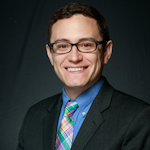Teledentistry ROI: Lessons learned in public health for private-practice dentists
Full disclosure: As a dental public health specialist, I view the world through a slightly different lens than a clinical dentist. I work in academia, so my world is filled with research, health surveillance, health equity, identifying access-to-care issues, and finding solutions to overcome those issues.
Despite this, when I talk to my clinical colleagues, particularly those working in community health centers or in private practice settings, it is a personal goal not to be an academician touting all these ideas that work in the controlled academic setting but that might not be possible in a less controlled, real-world dental practice. By working in a controlled environment, I’ve been able to explore numerous ways to use teledentistry that I believe could benefit you. Think of it as a “teledentistry test kitchen.”
At the crossroads of public health and private practice
From mobile dental operations where a hygienist takes portable equipment into the field in a virtual dental home-type model to using direct-to-patient models (e.g., video conferencing to talk to the patient), I’ve seen firsthand just how wide-ranging the applications for teledentistry are. Because of this, I’ve been able to save my private practice colleagues the headache of figuring out how exactly teledentistry can work for them and how it can impact their ROI from both provider and patient perspectives.
When it comes to money, our clinic has faced challenges with getting reimbursed when we conduct exams via teledentistry. In Arizona, for example, our state Medicaid program doesn’t recognize the use of teledentistry for comprehensive (D0150) and periodic (D0120) exams. Further, it wasn’t until the COVID-19 pandemic that the program started reimbursing for limited (D0140) exams conducted via teledentistry.
Since 99% of the patients I work with don’t have private insurance, I can’t speak in-depth to those plans, but I did see a lot more movement during the pandemic from private companies. Regardless of the reimbursement challenges, should you, from a return on investment (ROI) standpoint, use teledentistry in your practice? My answer is yes. Even if you don’t think teledentistry is for you, I would encourage you to ask a different question: Is it for my patients?
All patients want to save time and money
Patients want to spend their money on dental care that will not just make them healthy but also save them time and money. Consequently, we explored the savings for patients when utilizing teledentistry. As an overview, we looked at using teledentistry in a way that connects patients to our dental clinic but doesn’t require them to show up at the dental school for the first several appointments.
Working with a community partner about 25 minutes from the school, we established ourselves in a community center, without having to open a brick-and-mortar dental clinic. In a model that uses hygienists as the first providers to meet patients, they collect all the necessary clinical data—photos, videos, radiographs, hard- and soft-tissue assessments, etc.—that enables the dentist to develop comprehensive treatment plans.
This is a higher-cost model of teledentistry (we’ll look at a lower-cost model in just a bit), with costs associated with portable dental equipment (approximately $35,000) and buying a university vehicle (approximately $30,000), but we didn’t have to build any infrastructure. To get this endeavor up and running, we received funding from the Health Resources and Services Administration, our own university, A.T. Still University, and the Delta Dental of Arizona Foundation.
When we analyzed the time and money patients would spend traveling from their homes to the community site and then the dental school, we found that patients could save about half the travel time and half as much money spent using a rideshare service when they were seen in the community setting. If patients had to use public transportation (if it were available to them), traveling to the community setting took 60% less time than it would take to get to the dental school.
From a financial standpoint for the clinic, we had the potential to increase revenue when utilizing this model.
Due to the nature of the dental school, it takes up to three visits to get care initiated (there is a screening appointment, a comprehensive exam appointment, and a treatment plan presentation appointment). While most nonacademic clinics don’t need this many appointments to initiate care, oftentimes it can still take several appointments to get through the exam and treatment plan discussion. Working in the community, we were able to eliminate one of these appointments. By getting patients out of the dental school clinic, we can fill the chairs with higher revenue-generating procedures.
On top of that, since not every patient moves forward with care after seeing their treatment plans (maybe they were just shopping around or maybe they couldn’t afford it), valuable chair time that requires a dentist to physically interact with a patient (such as when they do a filling, root canal, crown, etc.) is not taken up by someone who isn’t getting treatment.
In this model, hygienists can work at the top of their scope, and patients can still get into the clinic for care the dentist provides. By shifting how we deliver those first few visits, we can increase clinic revenue by keeping the dentist’s schedule full of procedures that require his or her expertise.
While not necessarily realistic, if our clinic used this model with all of our patients, we could potentially increase clinic revenue by 100%–200%. Even if we used it for 25% of our patients, we could potentially increase revenue by 25%–50%.
Of course, the dentist still reviews all data that comes in from the hygienist, but this can be done during downtime or during a set time of day that doesn’t disrupt patient care. In our model, we take videos of the mouth that are about five to six minutes long (one 60- to 90-second video of each quadrant). Add in the radiographs, some extraoral photos, and the hygienist’s assessment, and it takes about 10 minutes to review a case.
This model obviously won’t work for every dental clinic. Developing community partnerships takes time and some expertise. This is where we need to look at a much lower-cost model. The direct-to-patient model of teledentistry that became much more prevalent during the COVID-19 pandemic is a more feasible option for many clinics.
Postpandemic relevance
Many people associate teledentistry only with the aforementioned model because of how common it became during the pandemic, but I have talked to many dentists who say they are using it less and less now that we better understand COVID-19.
However, even with a decreased risk of spreading COVID-19, there is still a strong argument from both the patient and provider aspects for offices continuing to embrace this type of teledentistry.
Let’s look at it from the provider perspective. The amount of equipment needed is relatively minimal. Most offices probably have the majority of items they would need, including a computer with good monitors (I recommend a dual-monitor setup), a webcam, and a subscription to a teledentistry solution that is HIPAA-compliant. When patients come to the clinic, there is still a need to use personal protective equipment, which has become incredibly expensive. Virtual appointments save money.
I’ve had the opportunity to use various systems over the last year, including the TeleDent all-in-one teledentistry platform by MouthWatch, and I’ve found that all of them work well. I recommend selecting a system that doesn’t require the patient to take a lot of steps on their end. TeleDent has recently added several new patient-friendly features.
Patient satisfaction matters
Why should you consider using direct-to-patient teledentistry even after COVID-19? Patients want convenience, and for the relatively low cost an office will pay to utilize teledentistry in this model—even if you can’t bill for the appointments—your patients’ satisfaction will pay dividends for years to come. Which patients would benefit most? In dentistry, since we often must use our hands to know what’s going on, how could teledentistry possibly benefit our patients? Treatment plan presentations, post-op evaluations, oral-facial pain follow-ups, new-patient consultations (gathering medical history, confirming insurance, etc.), and oral hygiene education are just a few examples of times when patients don’t need to be in a dental chair. Using the entire dental team at the top of their scopes of treatment will continue to increase value for the dentist.
For example, dental assistants or hygienists can collect medical histories and/or provide oral hygiene education. Office staff can review treatment plans. Dentists can evaluate patients for pain and triage the need for in-person visits or referrals to a specialist. These are just a few examples where patients can connect with the practice but avoid the hassle of coming into the clinic for an appointment. By eliminating these in-person visits, patients don’t have to take as much time off from work and school. In general, they will have less disruption to their day and increased satisfaction with their dental provider.
As I always say, utilizing teledentistry is a skill just like learning how to properly prep a tooth or file an insurance claim. The concepts are straightforward but take time to fully understand and implement to their fullest potential. If one is willing to put in the time to learn, teledentistry can be a tool that offers a solid ROI for both providers and the patients they serve.
Editor's note: This article appeared in the August 2021 print edition of Dental Economics.
Scott Howell, DMD, MPH, is an associate professor and director of public health dentistry and teledentistry at A.T. Still University, Arizona School of Dentistry & Oral Health (ATSU-ASDOH), and a clinical advisor for MouthWatch. A 2014 graduate from ATSU-ASDOH, he spent a year at the Swedish Medical Center GPR in Seattle treating patients with complex medical conditions and special needs. Afterward, he completed a dental public health residency at UT Health San Antonio in 2019. Dr. Howell is an international speaker and has written extensively on teledentistry.







